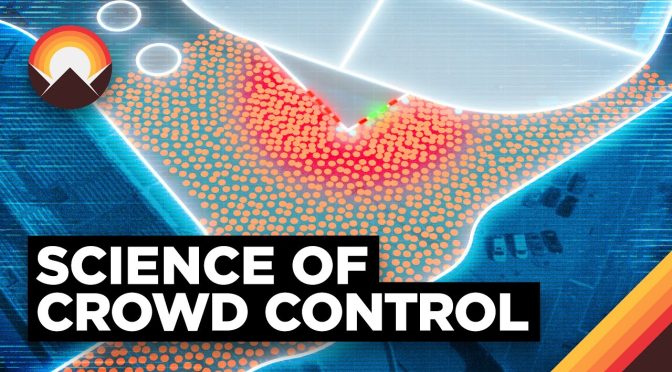Based on the video titled “How to Control a Crowd” by Wendover Productions, this article delves into the complexities of managing large gatherings of people and the factors that can lead to tragic outcomes.
Contents
- The Black Friday Scenario
- Debunking the Mindless Crowd Myth
- The Role of Shared Identity
- The Impact of Venue Design
- The Hajj Pilgrimage: A Case Study
- The Need for Continuous Improvement
- The video
The Black Friday Scenario
Imagine a Black Friday sale where an electronics store offers a massive discount on a highly sought-after gaming console. As the crowd grows in anticipation of the store’s opening, security personnel arrive late and struggle to manage the crowd. Despite their efforts to maintain order, the crowd’s dynamics lead to a dangerous situation known as a “crowd crush.” In such scenarios, individuals at the back, eager to get their hands on the discounted product, push forward, causing those in the middle to be compacted. This can result in some individuals being crushed to the point where they cannot breathe. The tragedy unfolds as different groups within the crowd have varying motivations, from securing the discounted product to merely surviving the crush.
Debunking the Mindless Crowd Myth
Historically, large gatherings were believed to devolve into a mindless state, where individuals acted recklessly. However, recent research challenges this notion. In emergency situations, such as fires, people often exhibit cooperative behavior rather than panic. This cooperative behavior is influenced by shared identities. For instance, when a flight is delayed, passengers bond over their shared inconvenience, leading to increased cooperation. Similarly, during events like concerts or religious gatherings, the shared identity of attendees promotes order and cooperation.
The Role of Shared Identity
Shared identity plays a crucial role in crowd behavior. For example, during the London Underground bombings in 2005, victims displayed a sense of unity and cooperated selflessly despite the chaos. Interestingly, crowd crushes are rare during civil unrest, possibly due to the strong shared identity of protesters. However, events like the Hajj pilgrimage, which should theoretically benefit from a strong shared identity, have witnessed tragic crowd crushes.
The Impact of Venue Design
The design of venues plays a significant role in crowd management. Events like concerts, which often feature unassigned seating, can lead to competitive dynamics as attendees vie for the best spots. This competition can escalate into dangerous situations, as seen during The Who concert in Cincinnati in 1979, where a rush to secure the best viewing spots resulted in a tragic crowd crush. Proper planning, awareness of risk factors, and effective response mechanisms are crucial to prevent such incidents.
The Hajj Pilgrimage: A Case Study
The Hajj pilgrimage in Mecca, one of the world’s largest annual events, has witnessed several crowd crush tragedies. Despite significant investments in infrastructure and crowd management strategies, challenges remain. For instance, in 2015, a tragic crush occurred at an intersection near the pilgrimage site, highlighting the need for continuous improvements in crowd management.
The Need for Continuous Improvement
While it’s easy to identify design flaws in hindsight, proactive measures are needed to ensure the safety of large gatherings. Events like the Hajj have made significant strides in crowd management, but there’s always room for improvement. Proper planning, understanding crowd dynamics, and effective response mechanisms can make the difference between a successful event and a tragic outcome.

